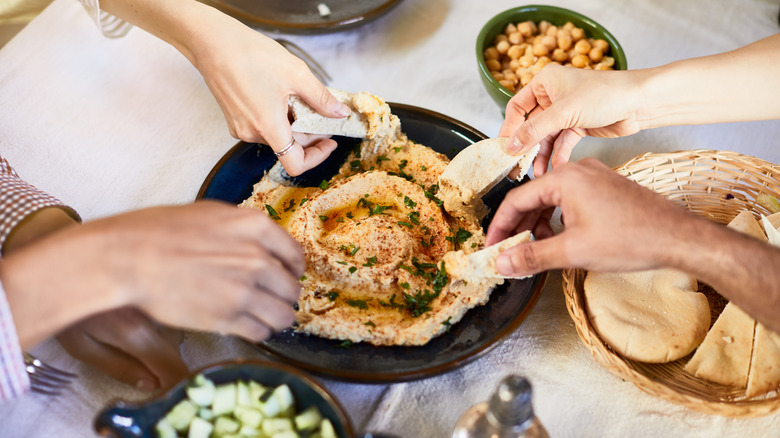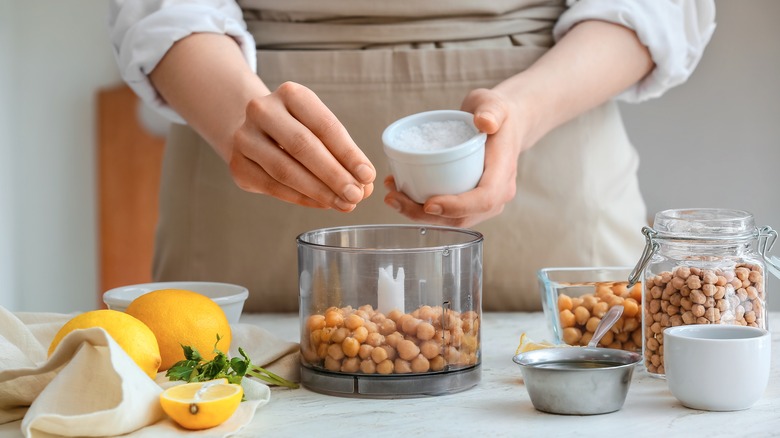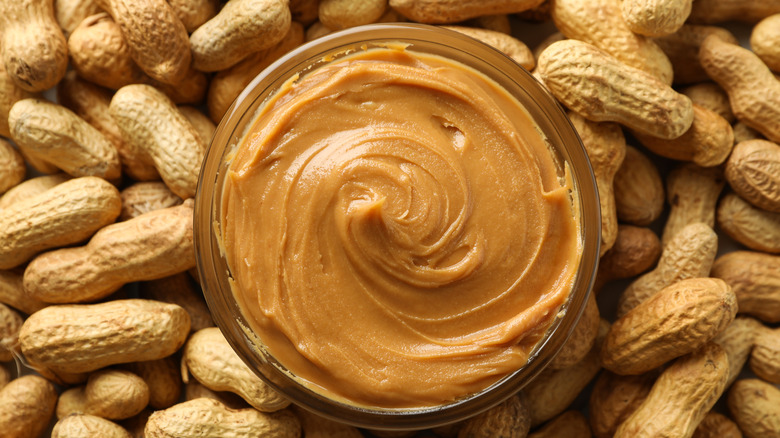Give Your Hummus A Salty Sweetness By Swapping Tahini For Peanut Butter
There are many things to love about hummus, that creamy, chickpea-based condiment often served with Greek and Mediterranean dishes. You've probably had it most often as a dip for pita chips, vegetables, or fruits, or as a sandwich spread. Among the virtues of the Middle Eastern dip is that it is super easy to make hummus at home with ingredients you might already have on hand, including canned chickpeas, olive oil, garlic, lemon juice, and tahini.
Or, you could consider veering from tradition by making a big bowl of tahini-free peanut butter hummus. The swap might sound like an unexpected suggestion, but it's more common than you might think. Both are creamy and have a savory, earthy nutty flavor, and using natural, unsweetened peanut butter is an acceptable substitute for tahini in many dip or dressing recipes. Tahini and peanut butter are also vegan and are sources of healthy fats, proteins, and fiber.
A subtle difference
Tahini is made from sesame seeds that have been toasted and then ground into a smooth, even slightly runny paste. Peanut butter is made from peanuts that have been roasted and then ground into a smooth, spreadable paste. The toasted sesame seeds in tahini impart a rich, creamy, and slightly earthy taste to hummus, whereas peanut butter gives hummus a slightly fattier and salty sweetness. The two are nutritionally close in calories and fat; peanut butter has slightly more protein, and tahini is sugar-free.
Their likenesses mean you can use peanut butter in much the same way you use tahini when making hummus. To start, try adding two tablespoons of natural peanut butter for every can of chickpeas you use. Know that since peanut butter can be slightly thicker than tahini, you might need to loosen the peanut butter with a splash or two of warm water in the food processor. If you're feeling like leaning into the peanut flavor, try toasting some raw peanuts in the oven and crushing them to use as a garnish.
Notes on peanut butter
Of course, not all peanut butter is smooth and creamy, like tahini is. Chunky and creamy-chunky versions of peanut butter are arguably as popular as smooth for sandwiches and in some recipes. But when choosing peanut butter for hummus, you'll have the best luck with the smooth varieties, as they have the closest textural resemblance to tahini. Peanut butter is also available in processed or natural varieties; we suggest using natural. Both natural peanut butter and tahini can develop a thin layer of oil on top that needs to be stirred in before you use the spread, and that oil plays an important role in creating hummus' creamy, luscious texture.
If you're not into peanut butter but would like to experiment with using something other than tahini in your hummus, consider trying a different kind of nut butter, such as walnuts, cashew or almond. Just as you can make peanut butter at home, you can make nut butter by simply grinding your favorite tree nut in a food processor until it reaches the spreadable consistency of your choosing. This option grants you control over the amount of sugar and salt in your hummus, not to mention a fresher flavor.


